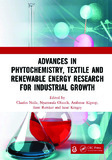| dc.contributor.author | Ondijo, C.O. | |
| dc.contributor.author | K’owino, O. | |
| dc.contributor.author | Kengara, F.O. | |
| dc.date.accessioned | 2023-12-14T09:02:36Z | |
| dc.date.available | 2023-12-14T09:02:36Z | |
| dc.date.issued | 2022-04-06 | |
| dc.identifier.uri | http://ir-library.mmust.ac.ke:8080/xmlui/handle/123456789/2491 | |
| dc.description.abstract | Water pollution due to organic contaminants has been a serious issue in developing countries
because of the acute toxicities and carcinogenic nature of these pollutants. Among various water treatment
methods, adsorption is purported to be one of the best because it is cheap and easy to prepare and use. Initially,
activated carbon was being used in water treatment to remove contaminants but it proved to be expensive and also
it did not degrade these contaminants after adsorption. For this reason, zinc oxide nanoparticles are synthesized
for recommended use in the degradation of pesticides. The zinc oxide nanoparticles were synthesized using Cissus quadrangularis plant leaf extract. The surface analysis of the synthesized nanoparticle was analyzed using
a particle analyzer and X-ray diffraction (XRD) crystallography. The synthesized nanoparticles were found to
have a mean diameter of 14.83 nm and the XRD pattern revealed the formation of ZnO nanoparticles showing
crystallinity. The synthesized ZnO nanoparticle showed a characteristic peak at a wavelength of 368 nm for electron excitation. This simple and cost-effective phytochemical approach for the formation of ZnO nanoparticles
has a promising application in biosensing, photocatalysis, electronics, and photonics | en_US |
| dc.language.iso | en | en_US |
| dc.publisher | CRC Press | en_US |
| dc.subject | Biosynthesis, zinc oxide, nanoparticles, potential, adsorbent, Degrading, organochlorines | en_US |
| dc.title | Phytochemical screening, total phenolic content, total flavonoid content and GC-MS evaluation of crude acetonic extracts of Prosopis juliflora | en_US |
| dc.title.alternative | Biosynthesis of zinc oxide nanoparticles as a potential adsorbent for degrading organochlorines | en_US |
| dc.type | Book chapter | en_US |

